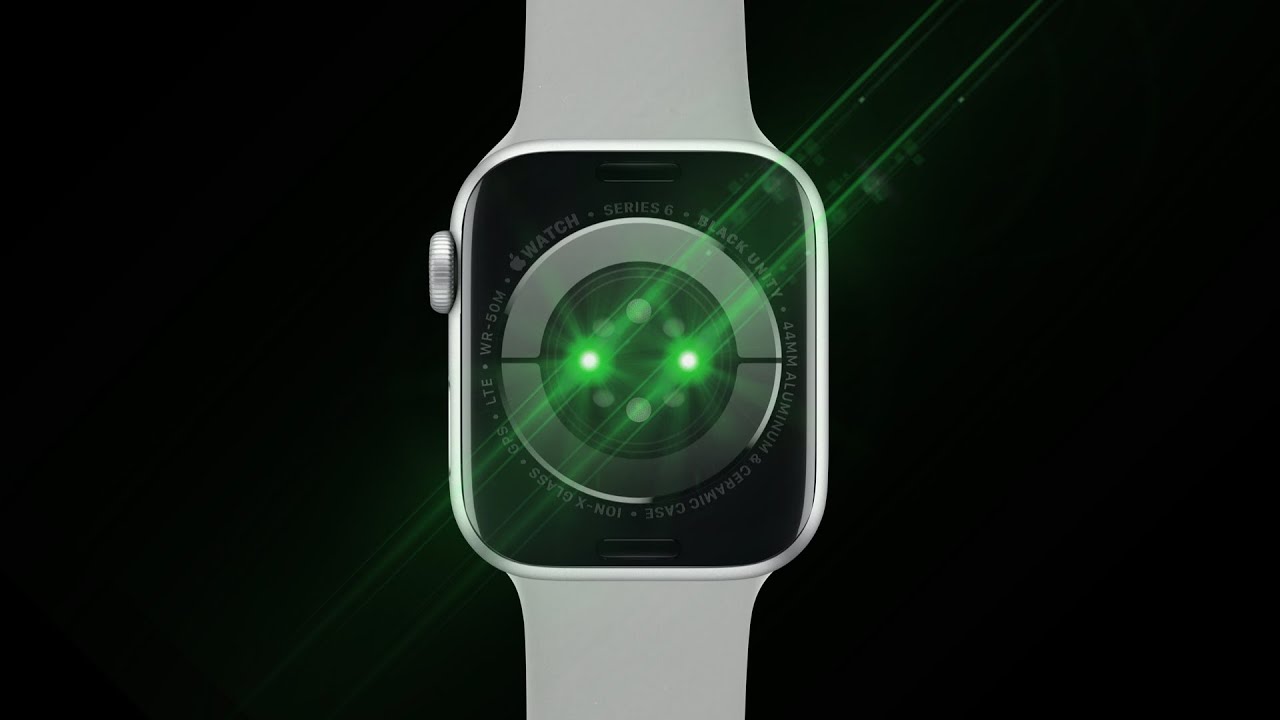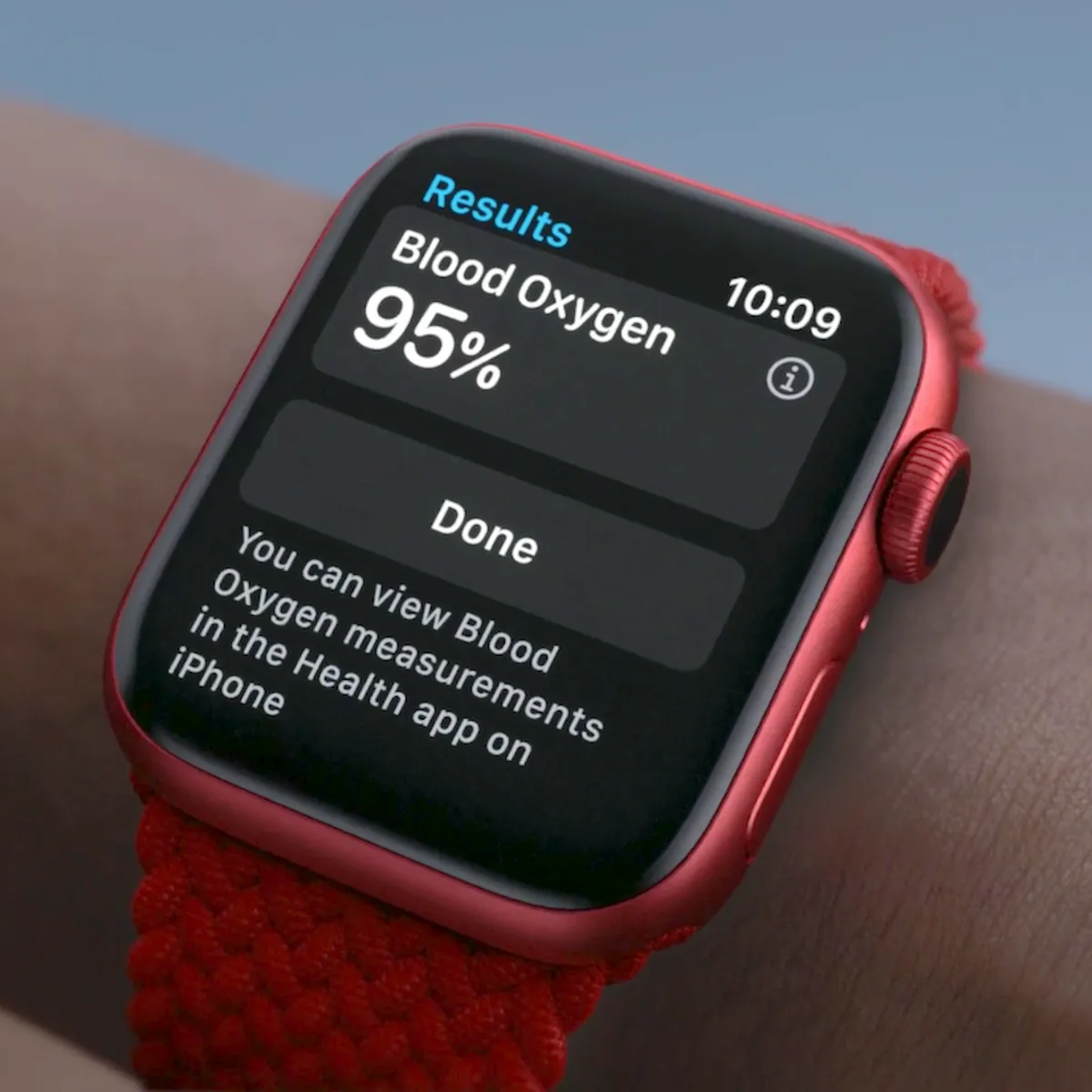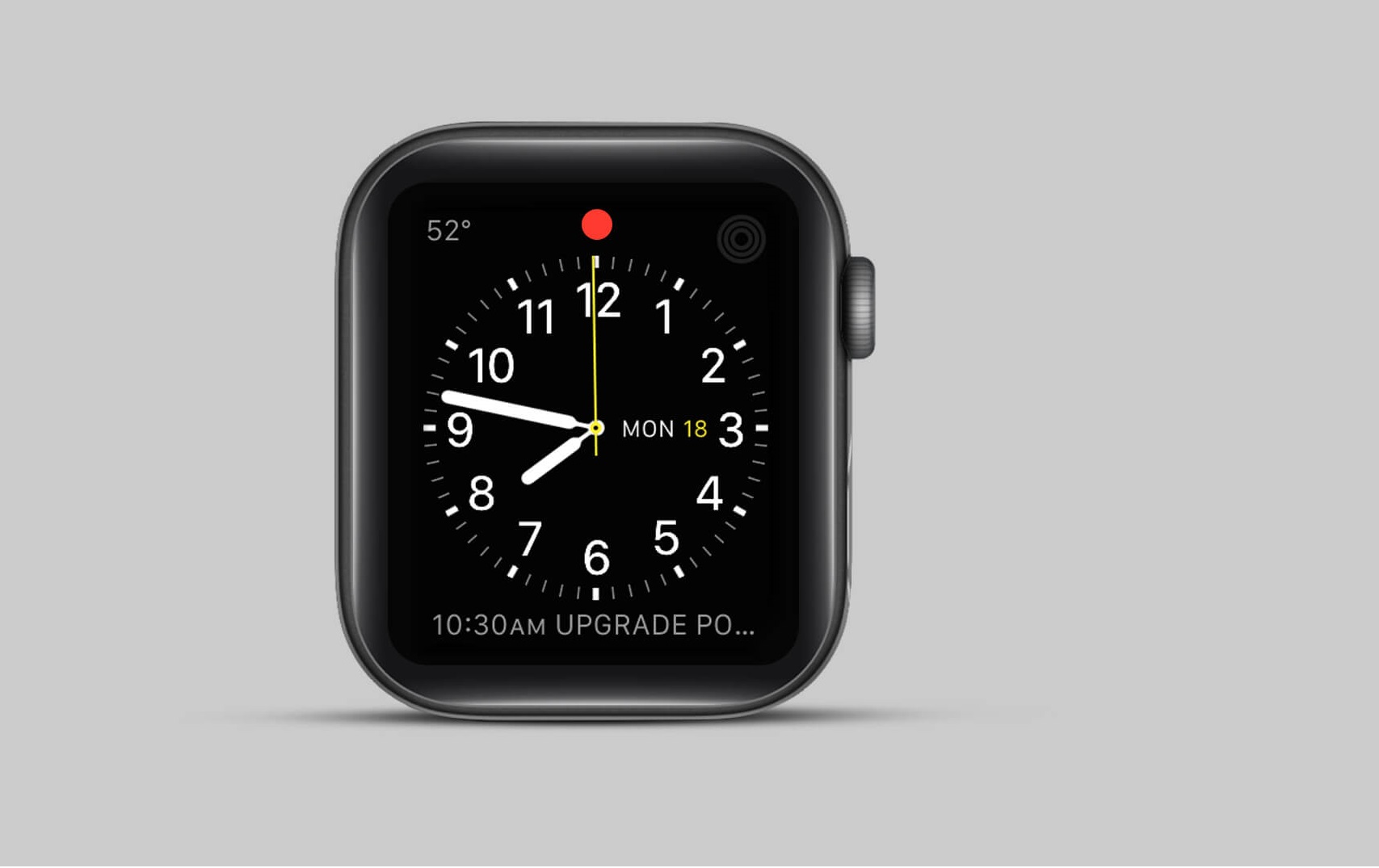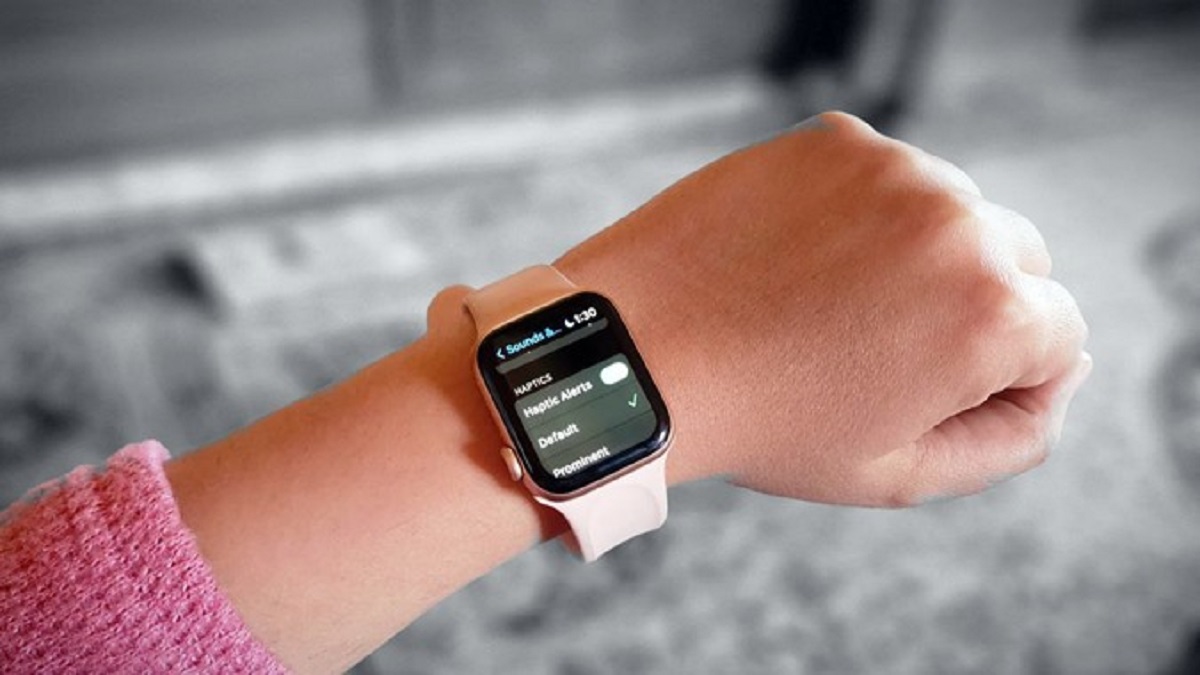Why Does My Apple Watch Have A Green Light
If you own an Apple Watch, you may have noticed a small green light on the back of the device. You might be wondering what the purpose of this light is and why it is there. In this article, we will uncover the mystery behind the green light on your Apple Watch and explore its significance.
The green light on your Apple Watch is actually a crucial component known as the “heart rate sensor.” This sensor is responsible for tracking your heart rate and providing valuable information about your health and fitness.
The heart rate sensor works by emitting green LED lights onto your skin and then measuring the amount of light that is reflected back. It takes advantage of the fact that blood absorbs light differently depending on whether it is oxygenated or deoxygenated. By analyzing the changes in light absorption, the Apple Watch can calculate your heart rate in beats per minute.
One of the reasons why the heart rate sensor emits a constant green light is to ensure a consistent and accurate reading. The green light helps to eliminate external factors that may interfere with the sensor’s accuracy, such as ambient light or variations in skin color.
When you wear your Apple Watch, the green light repeatedly illuminates your skin and analyzes the reflected light. This allows the watch to constantly monitor your heart rate and provide real-time data during workouts or throughout the day.
However, there may be instances where you notice the green light on your Apple Watch only occasionally illuminates. This could be due to various reasons, such as the watch not being worn tightly enough or the sensor not making sufficient contact with your skin.
If you are experiencing issues with occasional green light detection, make sure that your watch fits snugly on your wrist and that the band is properly secured. Clean the back of the watch and your skin to remove any dirt or sweat that may affect the sensor’s performance.
In some cases, the green light may not illuminate at all, indicating a problem with the heart rate sensor. If this happens, you may need to reset your Apple Watch or contact Apple Support for further assistance.
In summary, the green light on your Apple Watch serves a critical role in monitoring your heart rate. It ensures accurate readings and provides vital information about your overall health. Whether it is a constant presence or an occasional flicker, understanding the significance of the green light can help you make the most of your Apple Watch’s health tracking capabilities.
Introduction
Undoubtedly, technology has become an integral part of our lives, providing us with devices that not only keep us connected but also help us monitor our health and fitness. One such innovative device is the Apple Watch. Equipped with advanced features and sensors, the Apple Watch offers a seamless blend of style and functionality.
As you explore the various features of your Apple Watch, you may have noticed a small green light on the back of the device. This mysterious light raises curiosity and prompts questions about its purpose and significance. In this article, we will shed light on the green light on your Apple Watch and unravel its secrets.
Understanding the intricate workings of the green light requires delving into the functionality of the heart rate sensor. The heart rate sensor is an essential component of the Apple Watch, designed to measure your heart rate accurately and provide valuable insights into your health and fitness levels. By emitting green LED lights onto your skin and analyzing the reflected light, the sensor can determine your heart rate in beats per minute.
While the primary use of the heart rate sensor is to monitor your heart rate during workouts, it also continuously tracks your pulse throughout the day. This constant monitoring provides you with a comprehensive overview of your activity levels and helps you stay in tune with your body.
The green light emitted by the heart rate sensor plays a pivotal role in ensuring accurate readings. The specific wavelength of green light is chosen because it penetrates the skin effectively, allowing the sensor to detect subtle changes in blood flow. By analyzing the variations in light absorption, the Apple Watch can provide real-time heart rate data. Additionally, the green light helps to eliminate external factors that may interfere with the sensor’s accuracy, such as ambient light or variations in skin color.
While the heart rate sensor on your Apple Watch typically emits a constant green light, there might be instances where the light only occasionally illuminates. This intermittent illumination could be due to factors such as the watch not being worn tightly enough or the sensor not making proper contact with your skin.
In the next sections, we will delve deeper into the significance of the consistent green light emitted by the heart rate sensor and explore the possible reasons behind occasional green light detection. We will also provide troubleshooting steps to assist you in resolving any issues you may encounter.
By the end of this article, you will have a comprehensive understanding of the green light on your Apple Watch and its role in monitoring your heart rate. Whether it is a constant presence or an occasional flicker, knowing the significance of the green light will enhance your experience with the health tracking capabilities of your Apple Watch.
Understanding the Green Light on your Apple Watch
If you’ve ever glanced at the back of your Apple Watch, you may have noticed a small green light. This inconspicuous green light is not just for decoration; it serves a significant purpose in monitoring your health and fitness. Let’s dive deeper into what this green light represents and how it functions.
The green light on your Apple Watch is actually a heart rate sensor. This sensor utilizes advanced technology to monitor your heart rate and provide valuable insights into your overall well-being. It works by emitting green LED lights onto your skin and then analyzing the reflected light.
The heart rate sensor takes advantage of the fact that blood absorbs light differently depending on whether it is oxygenated or deoxygenated. When the green light shines onto your skin, the sensor detects the changes in light absorption caused by blood flow. By analyzing these changes, the Apple Watch can calculate your heart rate in beats per minute.
The reason behind choosing green light is its ability to penetrate the skin effectively. Green light has a specific wavelength that is well-suited for detecting subtle changes in blood flow. This allows the sensor to accurately capture your heart rate, whether you are resting, exercising, or going about your daily activities.
By continuously monitoring your heart rate, the green light helps to provide you with valuable information about your overall fitness level and health. Whether you’re tracking your heart rate during a workout session or monitoring your resting heart rate, the green light ensures accurate readings.
Furthermore, the green light serves another crucial purpose – to eliminate external factors that could interfere with the sensor’s accuracy. It helps to filter out ambient light, which could otherwise distort the readings. Additionally, it compensates for variations in skin color, ensuring consistent and reliable heart rate measurements across different individuals.
The consistent presence of the green light on your Apple Watch enables real-time tracking of your heart rate. This is especially useful during workouts, allowing you to monitor the intensity of your exercise and make adjustments as needed. The heart rate data collected by the green light also contributes to the accuracy of other health-related features on your Apple Watch, such as calorie tracking and activity measurements.
In summary, the green light on your Apple Watch represents the heart rate sensor, which plays a vital role in monitoring your heart rate and providing valuable health insights. Its ability to accurately detect and analyze subtle changes in blood flow ensures the accuracy of the data recorded by your Apple Watch. Whether you’re measuring your heart rate during workouts or obtaining real-time insights about your daily activities, the green light is your key to unlocking the health-tracking capabilities of your Apple Watch.
What is a Heart Rate Sensor and how does it work?
The heart rate sensor on your Apple Watch is a remarkable piece of technology that allows you to monitor your heart rate effortlessly. But what exactly is a heart rate sensor, and how does it work? Let’s explore the ins and outs of this innovative feature.
A heart rate sensor is a specialized component that measures your heart rate by detecting the subtle changes in blood flow under your skin. It utilizes an optical sensor that emits and detects light to capture this information.
When it comes to the Apple Watch, the heart rate sensor utilizes green LED lights and photodiodes to measure your heart rate. The green LED lights emit onto your skin, and the photodiodes measure the amount of light that is reflected back.
But how does this process translate into heart rate measurement? The principle behind it lies in the fact that blood absorbs light differently depending on its oxygenation level. Oxygenated blood (found in arteries) and deoxygenated blood (found in veins) have distinct absorption characteristics.
As the green light shines onto your skin, it penetrates the outer layers and reaches the blood vessels underneath. The light then gets absorbed or reflected back depending on the oxygenation level of the blood vessels it encounters.
The heart rate sensor in your Apple Watch analyzes the amount of light reflected back to determine your heart rate. By tracking the time it takes for each individual pulse of blood to flow through your blood vessels, it calculates the number of heartbeats per minute.
To ensure accuracy, the heart rate sensor continuously illuminates and analyzes your skin. It collects a continuous stream of heart rate data, allowing you to view real-time updates on your Apple Watch display.
The green light emitted by the heart rate sensor serves an essential purpose beyond heart rate measurement. It helps eliminate external factors that could potentially interfere with the sensor’s accuracy, such as ambient light or variations in skin color.
Moreover, the heart rate sensor’s ability to measure heart rate variability (HRV) provides insights into your overall health and fitness. HRV is the variation in time between consecutive heartbeats. By analyzing HRV, the heart rate sensor can provide valuable information about your stress levels, recovery, and cardiovascular health.
In summary, the heart rate sensor in your Apple Watch is a sophisticated piece of technology that utilizes green LED lights and photodiodes to measure your heart rate. By analyzing the changes in light absorption caused by blood flow, it accurately determines your heart rate in beats per minute. The continuous illumination and analysis, along with the elimination of external factors, ensures reliable and real-time heart rate monitoring. Additionally, the ability to measure heart rate variability offers insights into your overall health and fitness. The heart rate sensor is a key component that empowers you to take control of your health and make informed decisions about your well-being.
Constant Green Light: What does it mean and why is it important?
If you have ever worn an Apple Watch, you may have noticed that the heart rate sensor emits a constant green light. This consistent illumination serves a crucial purpose in providing accurate and reliable heart rate measurements. Let’s explore what the constant green light means and why it is essential.
The constant green light indicates that the heart rate sensor is actively monitoring your heart rate at all times. It ensures that you receive real-time data and allows you to stay in tune with your body’s responses during various activities.
One of the main reasons for the constant green light is to maintain the accuracy of the heart rate readings. The green LED lights emitted by the sensor penetrate the outer layers of your skin and reach the blood vessels underneath. This allows the sensor to capture subtle changes in blood flow and accurately measure your heart rate.
By emitting a continuous stream of green light, the heart rate sensor minimizes the impact of external factors that can interfere with accuracy. It helps to filter out ambient light, which could distort the readings. Additionally, it compensates for variations in skin color across individuals, ensuring consistent and reliable heart rate measurements.
The constant green light is especially important during workouts or physical activities. It allows you to monitor your heart rate in real-time, helping you track the intensity of your exercise and make adjustments accordingly. By staying within your target heart rate zone, you can maximize the effectiveness of your workouts and achieve your fitness goals.
Furthermore, the constant heart rate monitoring feature proves valuable in identifying potential health issues. Sudden or significant changes in your heart rate may indicate underlying health conditions, such as irregular heart rhythms. By providing continuous heart rate data, the Apple Watch can alert you to any abnormalities and prompt you to seek medical attention if necessary.
Another benefit of the constant green light is its contribution to other health-related features of the Apple Watch. The heart rate data collected during various activities and at rest forms the foundation for calculating calorie burn, determining exercise intensity levels, and providing personalized health insights.
In summary, the constant green light emitted by the heart rate sensor on your Apple Watch signifies that it is actively monitoring your heart rate. This continuous monitoring ensures accurate and reliable heart rate readings, especially during workouts and daily activities. It allows you to make informed decisions about your exercise intensity, track your calorie burn, and detect any potential health concerns. The constant green light is a vital aspect of your Apple Watch’s health tracking capabilities, enabling you to optimize your fitness journey and maintain a healthy lifestyle.
Occasional Green Light: Possible reasons and implications
While the heart rate sensor on your Apple Watch typically emits a constant green light, you may occasionally notice that the light only flickers or illuminates intermittently. This sporadic occurrence of the green light could be attributed to various factors, and it’s important to understand the possible reasons and implications behind it.
One common reason for the occasional green light detection is that the watch may not be worn tightly enough or the sensor may not be making sufficient contact with your skin. For optimal performance, it’s important to ensure that your Apple Watch fits snugly on your wrist and that the band is properly secured. This helps to maintain continuous and reliable contact between the heart rate sensor and your skin, ensuring accurate readings.
Sweat or moisture on your skin or the back of the device can also affect the performance of the heart rate sensor and cause intermittent green light detection. It’s essential to keep the back of your Apple Watch clean and dry. Consider wiping it with a soft, lint-free cloth before wearing it, particularly if you’ve engaged in activities that may cause perspiration.
Another factor that can lead to occasional green light detection is movement or motion artifacts. If you are engaged in vigorous physical activities or your wrist movements are erratic, the heart rate sensor may struggle to maintain proper contact with your skin. It’s crucial to ensure that your wrist remains relatively still during heart rate measurements, especially during intense workouts.
Skin tone can also play a role in occasional green light detection. The heart rate sensor relies on the penetration of green light into the blood vessels underneath your skin. Variations in skin color can affect the light’s absorption and reflection properties, potentially impacting the accuracy of the readings. However, Apple has taken steps to mitigate this issue by calibrating the sensor to accommodate different skin tones.
If you continue to experience issues with occasional green light detection despite taking the necessary precautions, there may be underlying technical or hardware-related problems with the heart rate sensor. In such cases, you may need to reset your Apple Watch or contact Apple Support for further assistance and potential resolution.
While occasional green light detection can be frustrating, it’s important to remember that it doesn’t necessarily indicate a failure of the heart rate sensor. By following guidelines for wearing the watch properly and maintaining a clean and dry environment, you can mitigate these issues and improve the accuracy of heart rate measurements.
In summary, the occasional flickering or intermittent green light on your Apple Watch can occur due to factors such as improper fit, inadequate skin contact, sweat or moisture, excessive movement, or variations in skin tone. By adjusting how you wear the watch and taking steps to maintain a clean and dry environment, you can minimize the occurrence of occasional green light detection and improve the accuracy of your heart rate readings.
Troubleshooting: Resolving issues with the Green Light
If you are experiencing issues with the green light on your Apple Watch, there are several troubleshooting steps you can take to resolve the problem. By following these guidelines, you can ensure that the heart rate sensor functions optimally and provides accurate readings.
1. Check the fit: Ensure that your Apple Watch is snugly and securely fastened on your wrist. A loose fit can lead to inconsistent contact between the heart rate sensor and your skin, resulting in intermittent green light detection. Adjust the band to achieve a comfortable yet secure fit.
2. Clean the back of the watch and your skin: Sweat, dirt, or oils can hinder the sensor’s performance and affect the accuracy of the green light detection. Regularly wipe the back of your Apple Watch and your skin with a soft, lint-free cloth to remove any debris or moisture that may be present.
3. Avoid excessive movement: During heart rate measurements, try to keep your wrist relatively still for accurate readings. Excessive movement or erratic wrist motions can disrupt the contact between the heart rate sensor and your skin, leading to intermittent green light detection. If you are engaging in intense workouts, consider securing your Apple Watch tightly and minimize excessive arm movements.
4. Experiment with placement: If you are still experiencing issues with the green light, try adjusting the placement of your Apple Watch on your wrist. Some individuals may find that positioning the watch slightly higher or lower on the wrist provides better contact between the sensor and the skin, resulting in more consistent green light detection.
5. Ensure skin dryness: Excessive moisture or sweat on your skin can affect the accuracy of the heart rate sensor. Before wearing your Apple Watch, make sure your skin is clean and dry. If you have been sweating or in a humid environment, consider waiting until your skin is dry before using the heart rate monitoring feature.
6. Restart or reset your Apple Watch: If all else fails, you can try restarting your Apple Watch or performing a reset. This can help resolve any software-related issues that could be affecting the performance of the heart rate sensor. Consult the Apple Support website or contact Apple Support directly for guidance on how to restart or reset your device.
7. Contact Apple Support: If you have tried all the troubleshooting steps and are still experiencing persistent issues with the green light on your Apple Watch, it may be necessary to seek further assistance. Apple Support can provide specialized guidance and help determine if there are any hardware-related problems with the heart rate sensor that need to be addressed.
By following these troubleshooting steps, you can increase the chances of resolving any issues with the green light on your Apple Watch. Remember, a properly functioning heart rate sensor is key to obtaining accurate heart rate readings and maximizing the health-tracking capabilities of your Apple Watch.
Conclusion
The green light on your Apple Watch represents the heart rate sensor, a vital component that enables you to monitor your heart rate and gain valuable insights into your health and fitness. Understanding the significance of this green light is essential for optimizing your experience with your Apple Watch and making the most of its health-tracking capabilities.
Throughout this article, we have explored the functions and workings of the heart rate sensor, both in terms of the constant green light and occasional green light detection. We have seen how the sensor emits green LED lights onto your skin, measures the reflected light, and calculates your heart rate in beats per minute. The constant green light ensures accurate and reliable heart rate measurements, while occasional green light detection could be due to factors such as fit, contact, moisture, movement, or skin tone.
To overcome any issues with the green light, we have discussed various troubleshooting steps. These include checking the fit of your Apple Watch, maintaining cleanliness on the back of the watch and your skin, minimizing excessive movement, experimenting with placement, ensuring skin dryness, restarting or resetting your Apple Watch, and seeking assistance from Apple Support if needed.
The green light on your Apple Watch serves as a constant reminder of the device’s health monitoring capabilities. Whether it’s providing real-time heart rate data, tracking your workouts, monitoring your resting heart rate, or alerting you to potential health concerns, the green light plays a crucial role in enhancing your overall well-being.
By utilizing the heart rate sensor and paying attention to the green light, you can tap into the power of your Apple Watch to support your fitness goals, enhance your understanding of your body’s responses, and make informed decisions about your health. Embrace the presence of the green light and have confidence in the accuracy and reliability of the heart rate monitoring feature on your Apple Watch.
Remember, the journey to better health and well-being starts with understanding your body, and the green light on your Apple Watch is your window to that knowledge.

























